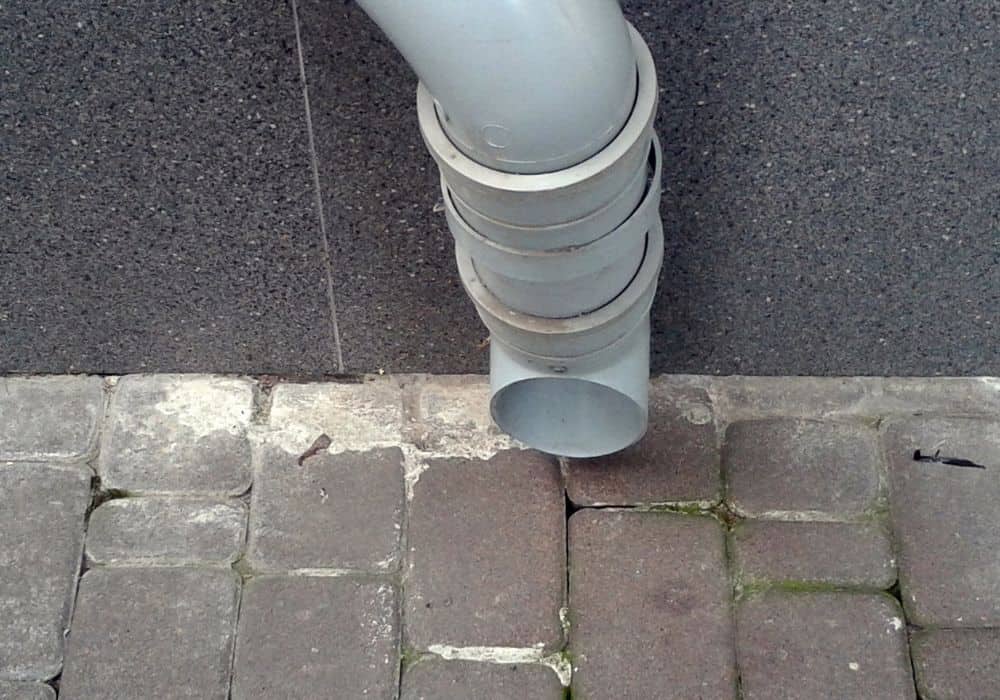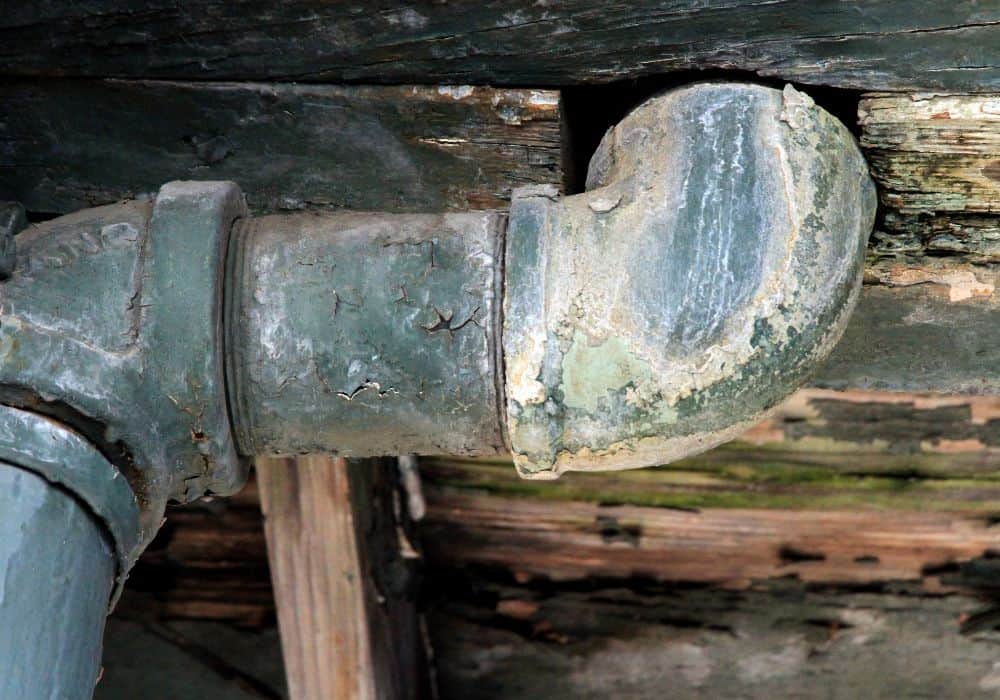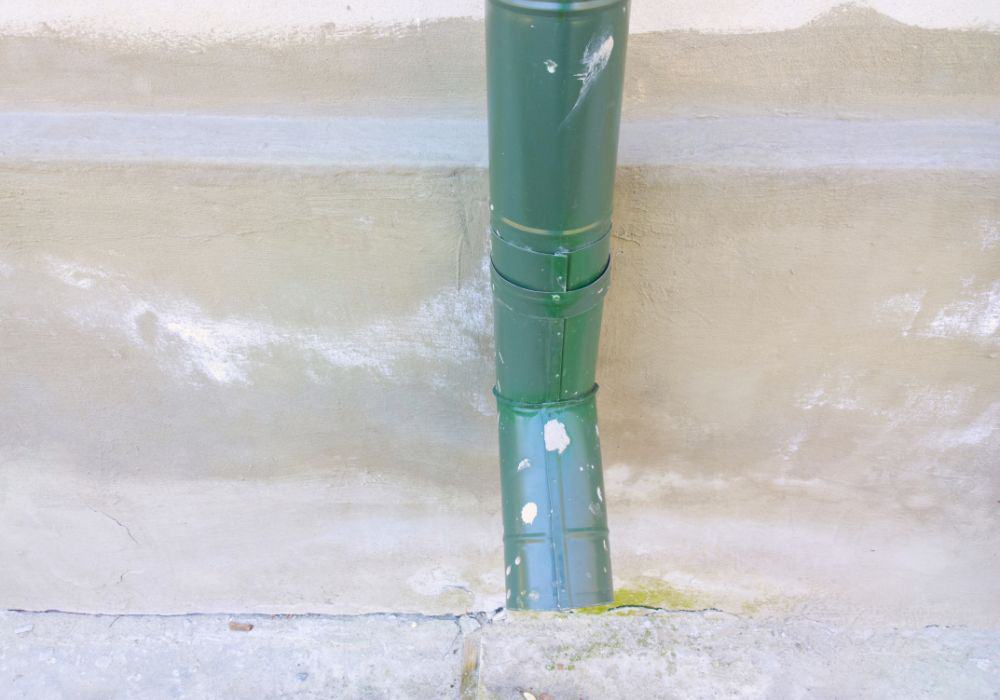Have you recently noticed a damp smell, problems with drainage, or even subsiding on your property? They could be a sign of a collapsed drain pipe. While that sounds worrying and left unattended can cause a serious problem, you can prevent damage to your property by fixing the issue early.
The job of drains is to direct the flow of water away from the home and when they are not working, it can result in damage to the foundations of your home. Luckily, it is possible to fix a broken underground drain pipe before it can damage your home. It is even possible to do it yourself by following the steps we share with you in this article.
Read on to find out how to fix a collapsed drain pipe on your property and save yourself from a costly repair.
What is a Collapsed Drain Pipe?
Your drain pipe can collapse if it becomes severely damaged. This is more likely to happen in older drainage systems where the pipes have been subject to more wear and tear. When a drain pipe collapses, it is potentially far more damaging than a leak. A leak lets water escape slowly, whereas when a pipe collapses, water will flood out.
While it can happen inside your home, it is more likely that the collapsed pipe will be outside in your garden. A collapsed outdoor pipe can flood your garden and allow the water to flow toward your house. This can damage the house’s foundations and also lead to expensive drainage repairs.
What Causes a Drain Pipe to Collapse?

Many things can cause a drain pipe to collapse. These include fluctuating temperatures from well above zero in the summer to below freezing in the winter. If you get clogs frequently, these may eventually cause the drain to collapse as they exert extra pressure on the pipes.
Tree roots can cause damage and lead to a collapsed drain. Roots can grow into pipes or push them out of place and if left unchecked, can cause the pipes to crack and collapse. Drain pipes can also collapse due to poor maintenance or improper installation, for example, if they are too close to the surface.
It is important to recognize the potential signs of a collapsed drain pipe. To help you identify the issue and prevent damage to your home, we have included the signs to look out for later in the article.
How to Fix a Collapsed Drain Pipe?
While some people will prefer to call a professional plumber to repair their collapsed pipe, others will want to tackle the issue themselves. Below, you will find the step-by-step process on how to do this.
Tools You Will Need:
- Replacement pipe
- Pipe Cutters or a saw suitable for cutting pipe
- Measuring Tape
- Drain glue and possibly a primer – speak to an advisor from your hardware store
- Pencil or a marker
- A file
- A shovel
Step One: Locate The Collapsed Pipe
Look for signs of damage to locate the collapsed section of the pipe. Often there is a sinkhole where the pipe has suddenly caved in. Other signs can include wet, muddy patches in your garden.
You can also check in your garden while draining a large amount of water, for example from a bath or a dishwasher, or a washing machine. When you see water bubbling to the surface, you have located the broken pipe.
Step Two: Check The Regulations For Wastewater
Before you move to the next step, you should check the regulations for wastewater disposal in your area. In certain areas, such as a water protection area, you may be required to call in a professional plumber. If there are no issues with DIY repairs, you can proceed to step three.
Step Three: Expose the Pipe

Once you have located your pipe and checked the regulations, it is time to dig. You should dig away in both directions from the collapsed area to ensure you can see the full extent of the damage. You also need to dig about six inches under the pipe to give yourself space for your repairs.
Step Four: Measure
Measure the length of the collapsed sewer pipe and purchase a replacement pipe in the same pipe material. You also need to ensure that the new pipe has the same diameter as the old pipe. When you purchase a new pipe, you need to get the right glue to join the pipes together. The best thing to do is to speak to a member of staff at the store.
Step Five: Remove The Broken Pipe
Before you start this phase of the repair, check that no water-pumping appliances are running while you work on the drainage pipe. To remove the broken pipe, you need to cut around the damaged area. Measure two inches from both ends of the pipe and mark where to cut. Choose the appropriate tool for cutting the pipe depending on the material.
You can check out this video from This Old House on YouTube to learn about different ways to cut pipes.
Step Six: Prepare The Pipe Ends
Check the ends of the pipes where you cut them and file away any burrs. Next, clean the ends of both old and new pipes. This will remove the dust and dirt and ensure that you get a good bond when you join the pipes.
Step Seven: Fitting the New Pipe
Check which is the female and which is the male end of the old and new pipes so you know which way to place the replacement section. Using the glue for your type of pipe, smear it on the inside of the female end and outside of the male end of the pipe. Fit the old and new pipes together.
Note: for some types of pipe, you will need to use a primer before you apply the glue. Again, speak to the store professional to ensure you get the right materials for your pipe.
Step Eight: Testing The Pipe
Leave the glue to bond according to the manufacturer’s instructions then let the water run through the pipe and check for any leaks in the joints between the old and new pipe.
Step Nine: Refill The Trench
Finish fixing the collapsed pipe by refilling the trench. Ensure that you replace the earth underneath the pipe as well. You should put gravel around and on top of the pipe before finishing with soil. The gravel will give your sewer line extra support.
What Are The Signs of a Collapsed Drain Pipe?
If you are concerned that you have a collapsed drain pipe somewhere on your property, what are the signs to look for? The common signs of problems with a sewage pipe are listed below.
- There is a smell of sewer odor in your home or garden.
- A collapsed drain means that the flow of water away from your property has been disrupted. This means the water will pool around the collapsed drain. You may notice damp patches on your walls or floors if the collapsed drain is under your home.
- Drainage problems such as water draining slowly or bubbling back up when you are draining your sink or a bathtub can be a sign of a collapsed drain pipe.
- When a pipe collapses, it often causes the surrounding area to sink or subside. So if you have noticed sinkholes or unexplained low points in areas, they can be a sign of a collapsed drain.
- Blockages or sewage backups happening regularly can mean that there is a collapsed drain somewhere in your drainage system possibly in the main sewer line.
- You see rodents in your home or garden. Rats are known to live in sewers and a collapsed pipeline can give them entry to your home.
- Cracks in your walls or sagging floors can be a sign of a collapsed drain pipe. When the water from the collapsed drain floods the soil below your foundation, your foundation can move and become damaged, which can show as cracks or sagging in walls and floors.

Using a Plumber
If you would prefer to use a plumber, get quotes from several companies before committing. They will be able to run a camera inspection on your plumbing system and may be able to replace the collapsed pipe without having to dig up too much of your garden. The methods they may be able to use include:
- Pipelining, where they replace the existing pipe using a liner. This creates a new plastic pipe within the old pipe.
- Pipe bursting, where a metal head is pulled underground. It breaks the old pipe, replacing it with an HDPE pipe. This method can even be used on cast iron pipes.
Conclusion
If you have signs of a collapsed sewer line on your property, it is best to act quickly. A broken sewer line, if left for an extended period, can cause serious damage to your property. You can use the steps described above to fix a collapsed drain pipe yourself. Regular drain cleaning will prevent future damage to your pipes.
We hope you have found all the answers you were looking for on how to fix a collapsed drain pipe. Should you have questions on the topic, let us know in the comments section.
